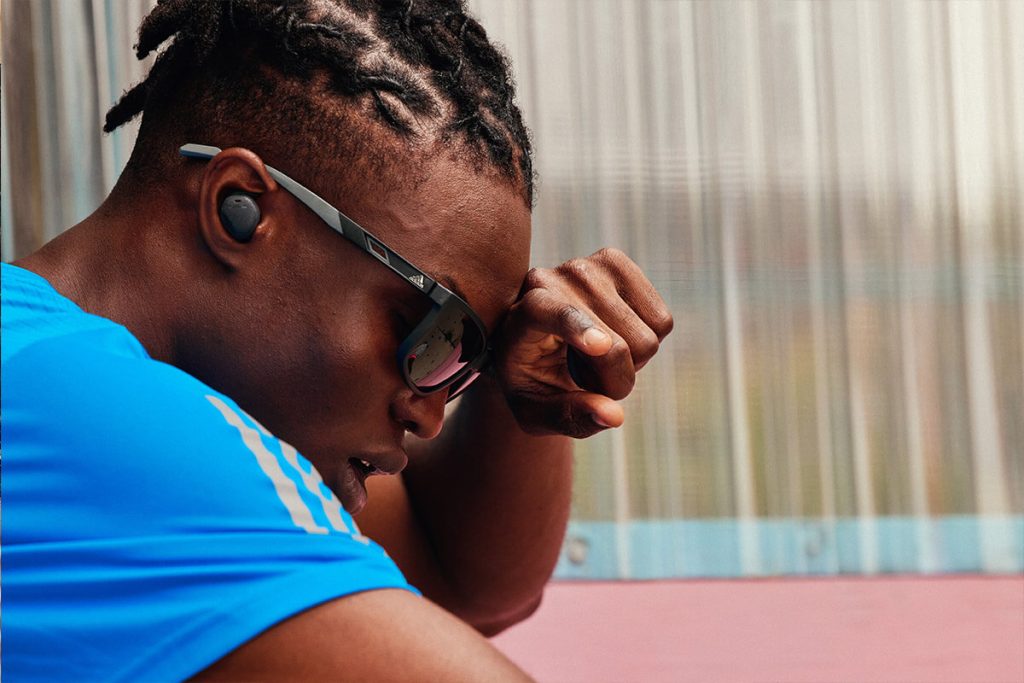Headache During or After Workouts? 4 Common Causes
Piercing pain at your temples, a throbbing ache in your forehead – we’ve all suffered the agony of headaches, and there are plenty of causes. Some of us are more likely to get them during or after exercise.
Good to know:
Headaches are divided into two types: primary and secondary.
- Primary headaches are triggered by exertion, tension, or not enough sleep.
- Secondary headaches, however, are a symptom of another more serious underlying condition like high blood pressure, an infection, substance withdrawal, or a stroke.
In this article, we’ll identify four common causes of headaches that can occur during and after exercise and give you tips for treating and preventing them. We’ll also uncover the truth about whether or not exercise can trigger migraines.
Important:
If you experience headaches that last for days, or if there are more days in a month that you suffer from headaches than without, you should consult a specialist. A medical professional can check to see if you are suffering from primary or secondary headaches, both of which can come from underlying conditions.
Table of contents:
4 Reasons Why You’re Suffering From Headaches During Or After Workouts
Reason #1: Sustained, Strenuous Exercise
Primary headaches caused by strenuous physical activity are called exertional exercise or exercise headaches. These are described as throbbing, migraine-like pain across the whole head (bilateral headaches) and last between five minutes and 48 hours.(1,2) An extreme exercise headache can also cause vomiting and vision problems. It’s important to take exercise-induced headaches seriously.
Headache prevention
Exertion headaches often develop if you skip your warm-up, your workout is too strenuous, or your body overheats. That can encompass high temperature indoors or outdoors, or when you are at high altitudes, like on a tough hike in the mountains.
One way to prevent exertion headaches is to reduce the intensity of your workouts. These tips for running in the summer can help you cope with the heat and avoid dehydration.
Reason #2: Poor posture
Bad posture, stress, and poor form when you work out can cause tension, which can lead to headaches during or after exercise. Tension headaches are described as a constant ache that is usually felt on both sides of the head.(3)
Headache Prevention
Check your form during workouts and your posture throughout the day. Review these tips on proper running form and be aware of the most common mistakes are made during bodyweight exercises.
Try using heat, massage, or doing exercises to relieve neck pain to relax your muscles if you get a headache after workouts.
Reason #3: Dehydration
Whether it’s from exercise or just not drinking enough fluids, dehydration is one of the most common causes of post-exercise headaches.
Avoid dehydration by calculating how much water you should drink each day with our liquid requirement calculator:
Headache prevention
Make sure you are drinking enough throughout the day. To add variety, you can include special sports drinks that keep you hydrated and provide your body with important micronutrients.
Reason #4: Low blood sugar
Headaches after exercise are bad enough, but if you also feel weak, shaky, dizzy, or even nauseous, you may be experiencing the symptoms of low blood sugar and depleted energy stores. Always ensure that your body has enough energy to work out.
Headache prevention
If you notice the symptoms listed above when you’re exercising, you should take a break. You can refill your energy and increase your blood sugar by eating more carbohydrates.
There are also a few foods that can trigger headaches and migraines or make them worse – usually in combination with other causes. Avoid these potential headache triggers(4):
- alcohol (especially wine or beer)
- chocolate
- caffeine
- aged cheese
- foods high in
- monosodium glutamate
- artificial sweeteners
- and preservatives like nitrates or nitrites
Can exercise trigger migraines?
Research on the connection between migraines and exercise is not very extensive. However, there are studies that show that migraineurs (people who frequently suffer from migraines) can experience exercise-triggered migraines. It is believed that the exertional headaches and tension headaches mentioned above are more likely to lead to a migraine.(5) If you are at risk of migraines, it is even more important that you prevent the four causes of headaches after exercise.
The good news:
Studies also show that regular exercise can help prevent migraines or at least reduce the intensity of the pain. This is thanks to the endorphins produced during sports.(6,7)
Takeaway
Before you start working out, make sure you are hydrated and that your energy stores are full. Pay attention to your form and practice good posture while exercising. If you have a bad headache combined with dizziness, nausea, shakiness, and/or vomiting, stop your workout immediately and consult your physician. The same applies if you experience headaches that last several days.
***

